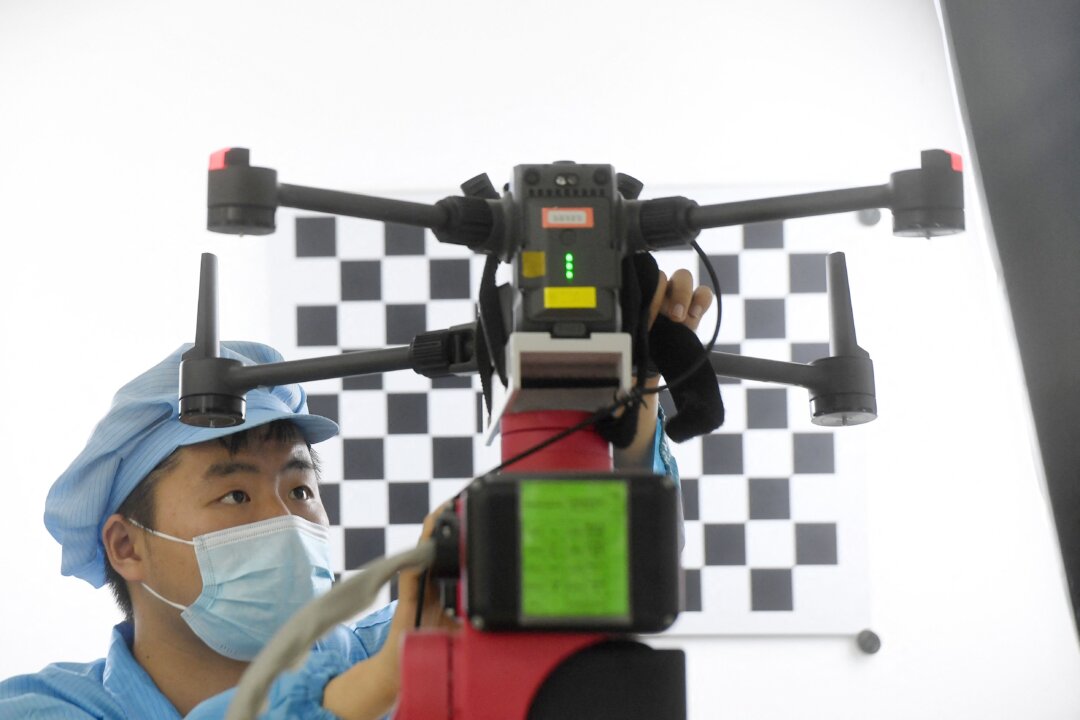The majority of commercial drones sold in the United States are made in China.
The Commerce Department announced on Jan. 2 that it’s considering a new regulation aimed at safeguarding the supply chain for drones from U.S. adversaries, particularly communist China.
The department’s Bureau of Industry and Security said in a statement that the proposed rule outlines how the involvement of foreign adversaries in drone supply chains—especially the “acute threats” posed by China and Russia—could allow foreign adversaries to “remotely access and manipulate these devices, exposing sensitive U.S. data.”
The agency is seeking public feedback by March 4 on several issues, including the national security risks associated with certain drone technologies and the threat level posed by different adversaries.
“Securing the unmanned aircraft systems technology supply chain is critical to safeguarding our national security,” Secretary of Commerce Gina Raimondo said in the statement, calling the proposed rulemaking notice “an essential step in protecting the United States from vulnerabilities posed by foreign entities.”
The Commerce Department’s announcement comes amid growing scrutiny of the flying devices made in China, particularly those produced by DJI, the world’s leading manufacturer of commercial drones, which controls approximately 80 percent of the U.S. market. In March 2024, DJI opened a flagship store on Fifth Avenue in Manhattan, signaling its expansion in the U.S. market.
A joint report published in January 2024 by the FBI and Cybersecurity and Infrastructure Security Agency warned of “a significant risk” to U.S. national security posed by drones manufactured in China. Central to these concerns are Chinese regulations and laws. The 2017 National Intelligence Law in China, for example, compels individuals and companies to cooperate with authorities of the Chinese regime in their intelligence work, such as turning over data that have been collected both inside and outside the country.
Last month, President Joe Biden signed a defense authorization bill that includes a provision potentially barring products made by DJI and those of its Chinese rival, Autel Robotics, from entering the United States. It directed unspecified national security agencies to determine within a year whether the models manufactured by two Chinese drone makers pose “an unacceptable risk to the national security of the United States.”
In a blog post, the Chinese company expressed concerns that it could be prohibited from shipping new models to the United States if no agency carries out such an assessment.
DJI has already been barred from buying or using U.S. technology or components after the Commerce Department put it on the “entity list” in 2020 for its involvement in the regime’s repression of Uyghur Muslims in the far-western region of Xinjiang.
U.S. customs officials have halted some DJI imports from China because of forced labor concerns, the company stated in October 2024, calling it a misunderstanding.
In addition to human rights and data transition concerns, U.S. officials and lawmakers are worried about a strategy by the Chinese Communist Party to infiltrate U.S. systems through technology.
“The Chinese Communist Party is working to undermine American sovereignty by forcing Americans to rely and depend on insecure Communist Chinese technology,” Rep. Elise Stefanik (R-N.Y.) said in September 2024. “Nowhere is this more evident than in the drone industry.”
Stefanik introduced the Countering CCP Drones Act, which aimed to quickly ban DJI’s products from U.S. markets. The House passed the bill in September 2024, but the final approved version stopped short of an outright ban, instead initiating a one-year countdown toward potentially blocking all DJI shipments.
The Shenzhen-headquartered company filed a lawsuit against the Pentagon in October 2024, seeking to overturn its designation as a Chinese military company.
Catherine Yang and Reuters contributed to this report.

